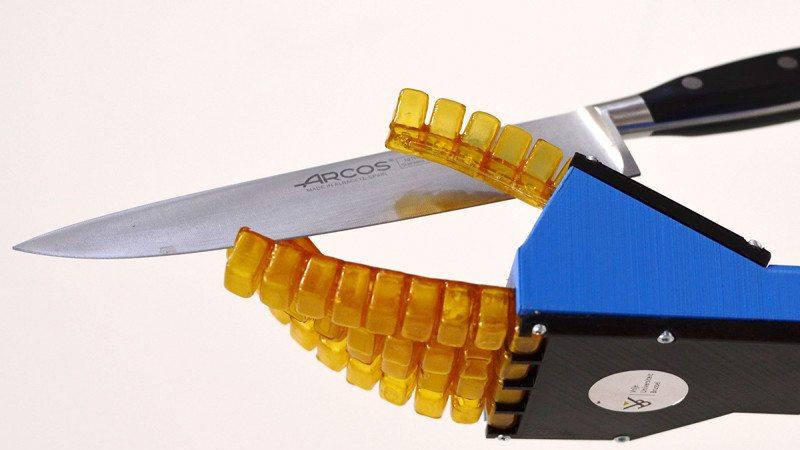VrijeUniversiteitBrussel
Latest

Self-healing polymers make for tougher soft robots
Robotic teams around the world are working on soft robots, because some situations call for a touch gentler than what a rigid machine can give. They can squish into tight locations for search-and-rescue missions, for instance, and pick up fragile objects without breaking or damaging them. Unfortunately, they're also more prone to damage, especially if they're bound to come across sharp edges in their environments. To solve that problem, a team of researchers from Vrije Universiteit Brussel in Belgium have developed a way to create soft machines that can heal themselves -- all you have to do is add heat.

AMP-Foot 2.0 prosthesis gives the power of real feet, keeps a light step (video)
It was five years ago that prosthetics took a very literal step forward when Arizona State University's SPARKy foot offered a more natural walk, capturing the inherent kinetic energy that previously needed a big motor to replicate. Belgium's Vrije Universiteit Brussel may well carry the torch for the next wave of artificial limbs. Its second-generation Ankle Mimicking Prosthetic Foot (AMP-Foot 2.0) uses a pair of force sensors to determine the leg's relative position and let an actuator build energy when the foot bends, locking the power away to use only when the owner pushes off. The efficiency produces all the torque needed to let a 165-pound person walk, but with just a 30W to 60W motor versus SPARKy's 150W -- a big help to battery life that also reduces the AMP-Foot 2.0's weight to that of the fleshy kind. We don't know how likely it is the Belgian prosthesis goes beyond the prototype phase; if we had our way, it would move just as quickly as future wearers undoubtedly will.

